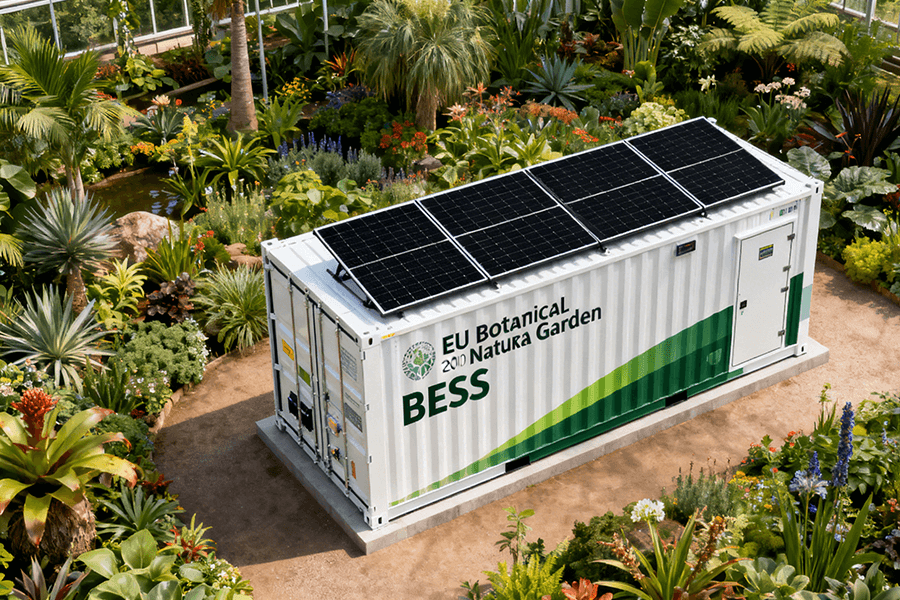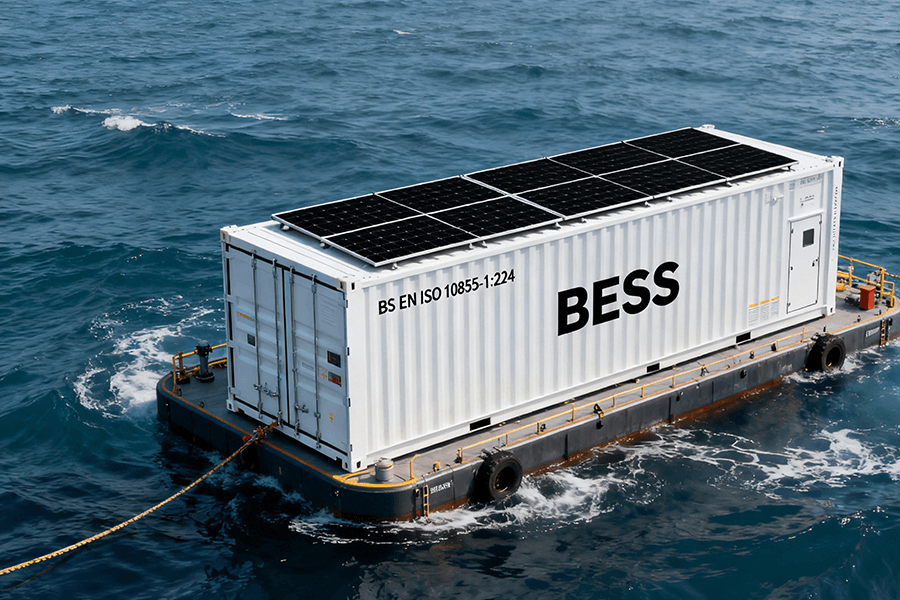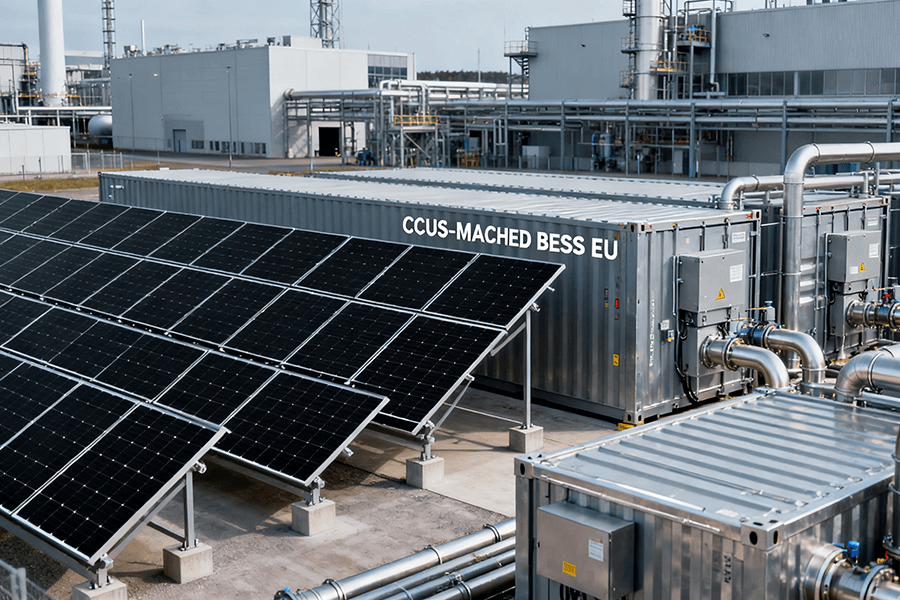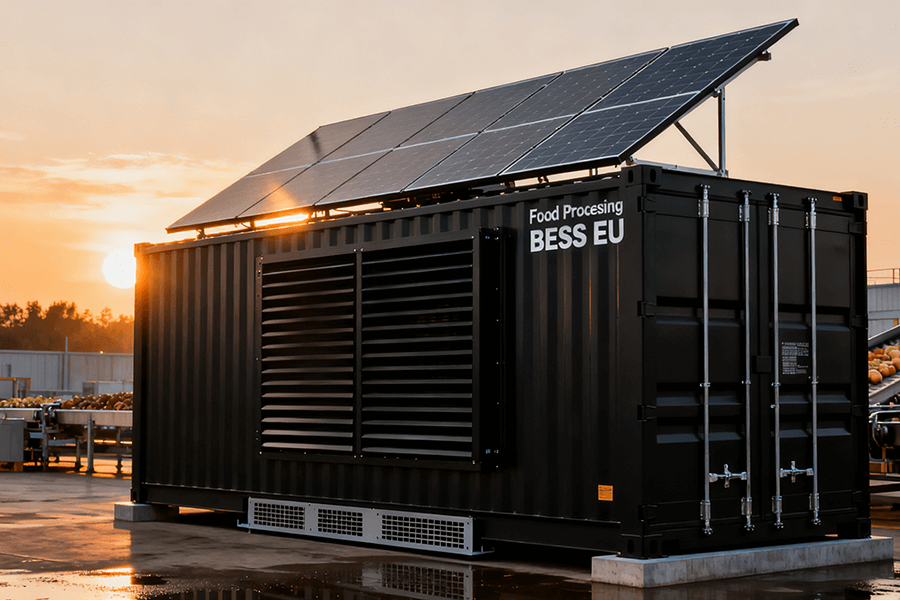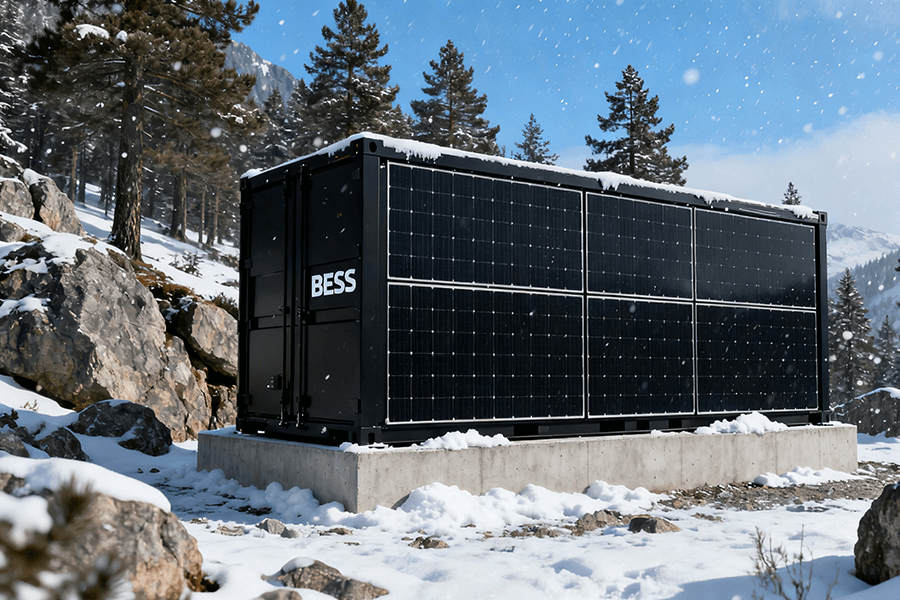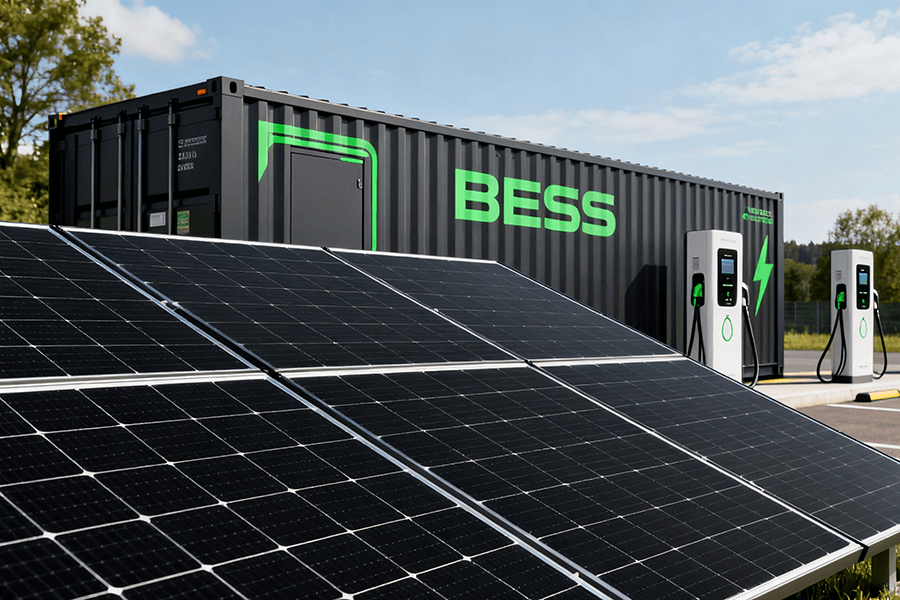
The EV Boom vs. Charging Infrastructure Gaps
By 2030, Europe is projected to have 30 million electric vehicles (EVs) on its roads, marking an exponential leap from the approximately 5.6 million EVs registered in 2023, as reported by the European Automobile Manufacturers Association (ACEA) in its 2024 EV Report. To accommodate this burgeoning fleet, ACEA estimates that Europe will require 1 million supercharging piles. However, as of 2025, the continent has installed only around 300,000 charging stations, leaving a significant gap between demand and infrastructure.
The challenge lies in two critical obstacles that traditional supercharging stations face:
- Grid Connection Complexities: Upgrading local power grids to support high-power EV charging is a slow, costly, and technically intricate process. Municipalities must invest in new transformers, cables, and substations—efforts that can take years to plan and execute.
- Power Supply Instability: When multiple EVs charge simultaneously, they can overload local grids, leading to outages, brownouts, or significantly reduced charging speeds. This variability undermines the reliability and convenience of EV ownership.
Enter Battery Energy Storage System (BESS) containers—a revolutionary solution that is transforming Europe’s EV charging landscape. These self-contained units store excess grid energy during low-demand periods and deploy it during peak charging hours, effectively alleviating strain on the grid and ensuring consistent, high-speed charging for EV drivers.
Key Roles of BESS Containers: Fixing Grid and Cost Pain Points
BESS containers act as a “power buffer” for supercharging stations, solving the industry’s most pressing issues. Below’s how they deliver tangible value:
Reducing Grid Connection Costs by €200k–€300k Per Station
Grid upgrades for supercharging stations pose a dual challenge of high costs and logistical complexity. A standard 120kW station requires a significant transformation from 11kV grid lines to 0.4kV, involving extensive civil engineering work such as road excavation, installation of new transformers, and navigating through local permitting processes that can cause substantial delays. These upgrades not only disrupt local traffic but also increase the overall time and budget for setting up a supercharging station.
BESS containers offer a revolutionary solution by eliminating the need for such extensive grid upgrades. They store power during off-peak hours when electricity rates are lower and release it during charging peaks, ensuring a stable power supply to the supercharging station. A real-world example from Germany validates this efficiency: A 120kW supercharging station integrated with a 500kWh BESS container achieved a remarkable reduction of €240,000 in grid connection costs. This saving is equivalent to the capital required to install 8 additional 50kW charging ports, significantly enhancing the station’s capacity and revenue potential. The following table compares the cost and upgrade requirements between traditional and BESS-integrated supercharging stations:
| Scenario | Grid Upgrade Required? | Grid Connection Cost | Additional Value |
|---|---|---|---|
| Traditional 120kW Station | Yes (11kV→0.4kV) | €350,000–€450,000 | None |
| 120kW Station + 500kWh BESS | No | Traditional 120kW Station | Funds 8 extra ports |
Enabling 350kW Ultra-Fast Charging Without Grid Meltdowns
The demand for speed is a key factor driving the adoption of electric vehicles. 350kW ultra-fast chargers have the remarkable capability to add 200km of range in just 10 minutes, making long-distance travel more convenient for EV drivers. However, this convenience comes with a significant drawback. When 3–4 EVs use these high-powered chargers simultaneously, the grid experiences a sudden power surge equivalent to powering 500 households. Such surges can overload the grid, leading to power outages, increased maintenance costs, and reduced grid reliability.
BESS containers function as a “shock absorber” in the electrical grid, safeguarding it from these sudden surges. During peak demand periods, they release stored power to supplement the grid, ensuring that charging speeds remain consistent and the grid remains stable. A prime example of this effectiveness can be seen at the Netherlands’ A2 highway charging hub, which is equipped with 4x350kW chargers and a 1MWh BESS. Before the installation of the BESS, the hub experienced an average of 12 grid overload incidents per month. After integrating the BESS, these incidents dropped to zero, as reported in the Netherlands EV Charging Authority 2025 Report. This not only improves the reliability of the charging infrastructure but also reduces the need for costly grid reinforcements in the surrounding areas.
Optimizing User Experience and Operator Profits
BESS containers don’t just fix grids—they make supercharging stations more user-friendly and profitable.
Cutting Waiting Times from 45 Minutes to 15 Minutes
Long queues are the #1 complaint of EV drivers, transforming what should be a quick charging stop into a frustrating ordeal. Grid constraints often force stations to limit the number of high-power chargers, leading to wait times that can exceed 1 hour during rush hour. These bottlenecks not only deter potential customers but also undermine the convenience promised by electric mobility.
BESS containers remove this limit by reducing grid dependency. A prime example is a French highway station in Lyon, which initially featured only two 150kW chargers. Facing significant congestion, the station installed a 750kWh BESS and added three more 150kW chargers. The results were transformative:
- Waiting Time Reduction: Average waiting times plummeted from 45 minutes to 15 minutes, eliminating the notorious “range anxiety” caused by lengthy queues.
- Customer Satisfaction: According to the French EV Association Survey 2025, customer satisfaction scores rose by 68%, demonstrating the direct link between faster charging and user loyalty.
Boosting Profits by 15–20% with Time-of-Use (TOU) Arbitrage
Electricity prices in Europe exhibit extreme volatility, creating both challenges and opportunities for charging station operators. For instance, in Germany:
| Time Period | Price (€/kWh) |
|---|---|
| 00:00–06:00 | ~€0.08 |
| 17:00–21:00 | ~€0.30 |
BESS containers capitalize on these price differentials through TOU arbitrage. By charging at off-peak prices and supplying power during peak hours, they transform charging stations from cost centers into revenue drivers. Here’s a financial breakdown for a station with 10 chargers and a 1MWh BESS:
- Monthly Profit Increase: The TOU strategy adds €1,200–€1,500 in profit, representing a 17% increase in margins (source: European Energy Market Report 2025).
- Sustainable Business Model: This revenue stream not only improves the station’s bottom line but also supports long-term investment in infrastructure upgrades.
Integrating Renewable Energy and V2G: The Future of Charging
BESS containers are key to making EV charging sustainable—and future-proof.
Powering 40% of Charging with Solar Energy
Europe’s ambitious renewable energy targets set the stage for a transformative shift in electric vehicle (EV) charging infrastructure. By 2030, the continent aims to derive 42% of its energy from renewable sources. Battery Energy Storage System (BESS) containers play a pivotal role in enabling supercharging stations to contribute meaningfully to this green energy revolution.
Let’s take a closer look at a prime example: a state-of-the-art supercharging station located in Barcelona, Spain. This remarkable facility is equipped with 100kW solar panels and a 2MWh BESS, showcasing the immense potential of integrated renewable energy solutions. Even on overcast days, an astonishing 40% of the charging power is sourced from the sun.
This sustainable approach brings about significant environmental benefits. According to the Spanish Renewable Energy Institute 2025, it slashes carbon emissions by 180 tons per year—the equivalent of planting 900 trees! 🌳
The success of the Barcelona station highlights the versatility of BESS containers in optimizing solar energy utilization. During peak sunlight hours, when solar energy production exceeds immediate demand, the excess energy is stored in the BESS for later use. This ensures a consistent power supply to charging stations, reducing their reliance on the grid and minimizing their carbon footprint. 🛡️
Unlocking V2G Potential: Turning EVs into Grid Assets
The future of EV charging goes far beyond the traditional “grid-to-vehicle” model. Enter the concept of “vehicle-to-grid (V2G)”, a revolutionary paradigm that transforms EVs into mobile energy storage units. BESS containers serve as the linchpin in this emerging ecosystem, acting as intermediaries between EVs and the power grid.
Here’s how it works:
- When EVs are parked and not in use for charging, their batteries can be tapped to feed excess power back into the BESS.
- The stored energy can then be dispatched to the grid during periods of high demand, helping to balance the load and stabilize the electrical system.
This bidirectional flow of energy creates a symbiotic “vehicle-storage-grid ecosystem” that benefits all stakeholders:
- EV drivers: Have the opportunity to monetize their parked vehicles by selling excess power back to the grid.
- Charging stations: Can generate additional revenue streams by facilitating these transactions.
- Grid operators: Gain access to a flexible and distributed energy resource that can help alleviate stress during peak demand periods.
While V2G technology is still in its infancy, early pilot projects have yielded promising results. For instance, a recent initiative in Sweden, involving 20 EVs and a 500kWh BESS, demonstrated the system’s potential to reduce grid stress by 22%, as documented in the Sweden V2G Pilot 2025. These findings underscore the transformative potential of BESS containers in unlocking the full value of EVs as dynamic energy assets.
As the adoption of EVs continues to accelerate, the integration of BESS containers and V2G technology will be crucial in building a sustainable, resilient, and future-proof charging infrastructure. By harnessing the power of renewable energy and vehicle-to-grid interactions, Europe is paving the way for a cleaner, more efficient transportation future. 🌍🚗
Conclusion: BESS Containers = Europe’s EV Charging Game-Changer
To hit its 2030 EV goals, Europe needs supercharging stations that are fast, reliable, and affordable—and BESS containers are the only solution that delivers on all three. They cut grid costs, eliminate outages, reduce wait times, and boost profits—all while supporting renewable energy.
But here’s the catch: Adoption needs to speed up. Policymakers should offer subsidies for BESS-equipped stations (e.g., €50,000 per 500kWh BESS) to lower upfront costs.
How Maxbo Solar (That’s Us!) Is Leading the Charge
At Maxbo Solar (www.maxbo-solar.com), we’ve designed BESS containers specifically for European supercharging stations. Our solutions are:
- Europe-compliant: Certified to meet CE, IEC 62933, and VDE 2510 standards (critical for grid integration).
- Scalable: From 250kWh (urban stations) to 2MWh (highway hubs).
- Smart: Equipped with AI that optimizes TOU arbitrage and solar integration—no manual adjustments needed.
We’ve already installed 120+ BESS containers across Europe (including projects in Germany, France, and Spain), helping stations cut costs by 30% and boost renewable usage by 40%. If you’re building or upgrading a supercharging station, we’re here to turn your grid headaches into growth. Visit our website to request a custom quote—let’s build Europe’s EV future together.

